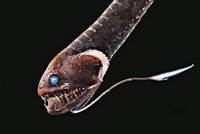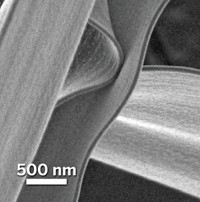Advertisement
Grab your lab coat. Let's get started
Welcome!
Welcome!
Create an account below to get 6 C&EN articles per month, receive newsletters and more - all free.
It seems this is your first time logging in online. Please enter the following information to continue.
As an ACS member you automatically get access to this site. All we need is few more details to create your reading experience.
Not you? Sign in with a different account.
Not you? Sign in with a different account.
ERROR 1
ERROR 1
ERROR 2
ERROR 2
ERROR 2
ERROR 2
ERROR 2
Password and Confirm password must match.
If you have an ACS member number, please enter it here so we can link this account to your membership. (optional)
ERROR 2
ACS values your privacy. By submitting your information, you are gaining access to C&EN and subscribing to our weekly newsletter. We use the information you provide to make your reading experience better, and we will never sell your data to third party members.
Materials
Hide And Seek
Cephalopod camouflage inspires materials research
by Bethany Halford
November 12, 2007
| A version of this story appeared in
Volume 85, Issue 46
At first glance, the algae-covered rock sitting on the ocean floor could not be more unremarkable. With its leafy fronds waving gently in the current, it's little more than undulating background in the underwater world. But as a diver approaches, a curious thing happens: The fronds stretch and soften, changing color and shape as a spooked octopus emerges from the surface, shedding its disguise before it darts off into the deep.
Cephalopods—octopus, squid, and cuttlefish—are experts in the art of camouflage. They can make themselves look like fish, rocks, and coral, thwarting predators thanks to the highly evolved camouflaging mechanism of their skin. Scientists are trying to decipher the secrets of cephalopod skin, hoping to find the mechanisms that make the creatures masters of disguise. Studying their artful concealment could also provide new camouflage strategies for military applications.
Cephalopods have evolved complex camouflaging mechanisms because almost every creature that they encounter finds them to be delicious, explains Lydia Mäthger, a research associate in Roger Hanlon's group at the Marine Biological Laboratory in Woods Hole, Mass. "They're basically just a big chunk of protein out in the sea," she says. Consequently, the animals spend their entire day camouflaged, shifting their form to hide from predators.
Each layer of a cephalopod's skin has a specific function for concealing the creature. The innermost layer uses light-scattering leucophore cells to reflect ambient light. Under white light, for example, the leucophores look white. These give the cephalopods a sort of base coat that helps them to match their surroundings.
The outermost layer of a cephalopod's skin allows the animal to change color. It's full of chromatophores, which are "essentially little balloons, perhaps a millimeter in diameter, that are filled with red, yellow, or brown pigment," Mäthger explains. When the muscles attached to each chromatophore contract, they pull the pigment sack outward, expanding regions of color on the skin. When the muscles relax, the chromatophores close back up.

Cephalopods have highly variable numbers of chromatophores: from 40 for deep-water squid to over a million for octopuses and cuttlefish. Nerves connect the chromatophores directly to the animal's brain, so the creature doesn't have to rely upon hormones or some other signaling mechanism in order to change color, Mäthger says.
Between the colorful chromatophores and the light-scattering leucophores is a reflective layer of skin made up of iridophores. These cells reflect color and are responsible for the blue, green, gold and silver shades in the animal's skin.
Not much is known about the molecular mechanisms behind a cephalopod's mysterious skin, but researchers are homing in on the reflective proteins that make up the iridophores. Most marine organisms get their reflective properties from purine crystals in their skin, but in cephalopods, reflectance arises from proteins known as reflectins. These proteins form stacked-pancake-like structures—called platelets—within the skin. The platelets create thin-film interference that the creature can use to manipulate incident light.
"These are very unusual proteins," says Rajesh R. Naik, the lead biotechnology researcher at the Air Force Research Laboratory in Dayton, Ohio. Their amino acid sequence is unlike that of any known protein, Naik says. About 57% of the protein is made up of four relatively rare amino acids-tyrosine, methionine, arginine, and tryptophan. Meanwhile, the amino acids alanine, leucine, isoleucine, and lysine are completely absent from the protein.
"We don't have a good understanding of the reflectins' structure in vivo," says Wendy J. Crookes-Goodson, a research scientist in Naik's group. But by studying the materials properties of reflectins in vitro, the research team hopes they will gain new insights for materials design (Nat. Mater. 2007, 6, 533).
"The protein has very unusual behavior that can be exploited for other applications," Naik says. "You can make very nice thin films out of the protein, and the films respond to their environment." For example, thin films cast from reflectins have the highest known index of refraction of films made from any naturally occurring protein. When exposed to water, methanol, and ethanol vapors, these films swell, shifting their reflected color from red to blue.
Naik's team also found that reflectins cast into a thin film from an ionic liquid solution will organize themselves into diffraction gratings that are defect-free over a length of several millimeters. Their ability to self-assemble in this manner suggests that the materials could be useful for photonic applications, Naik says.
Questions about reflectins still abound, say Naik and Crookes-Goodson. How did such an unusual protein evolve? What can we infer about how a cephalopod uses reflectin from the protein's behavior in vitro? How can we translate what we know about these creatures' astounding skin into a modern camouflaging system? Uncovering the answers to these questions, however, may prove to be as difficult as finding a cephalopod wearing its most cunning disguise.





Join the conversation
Contact the reporter
Submit a Letter to the Editor for publication
Engage with us on Twitter